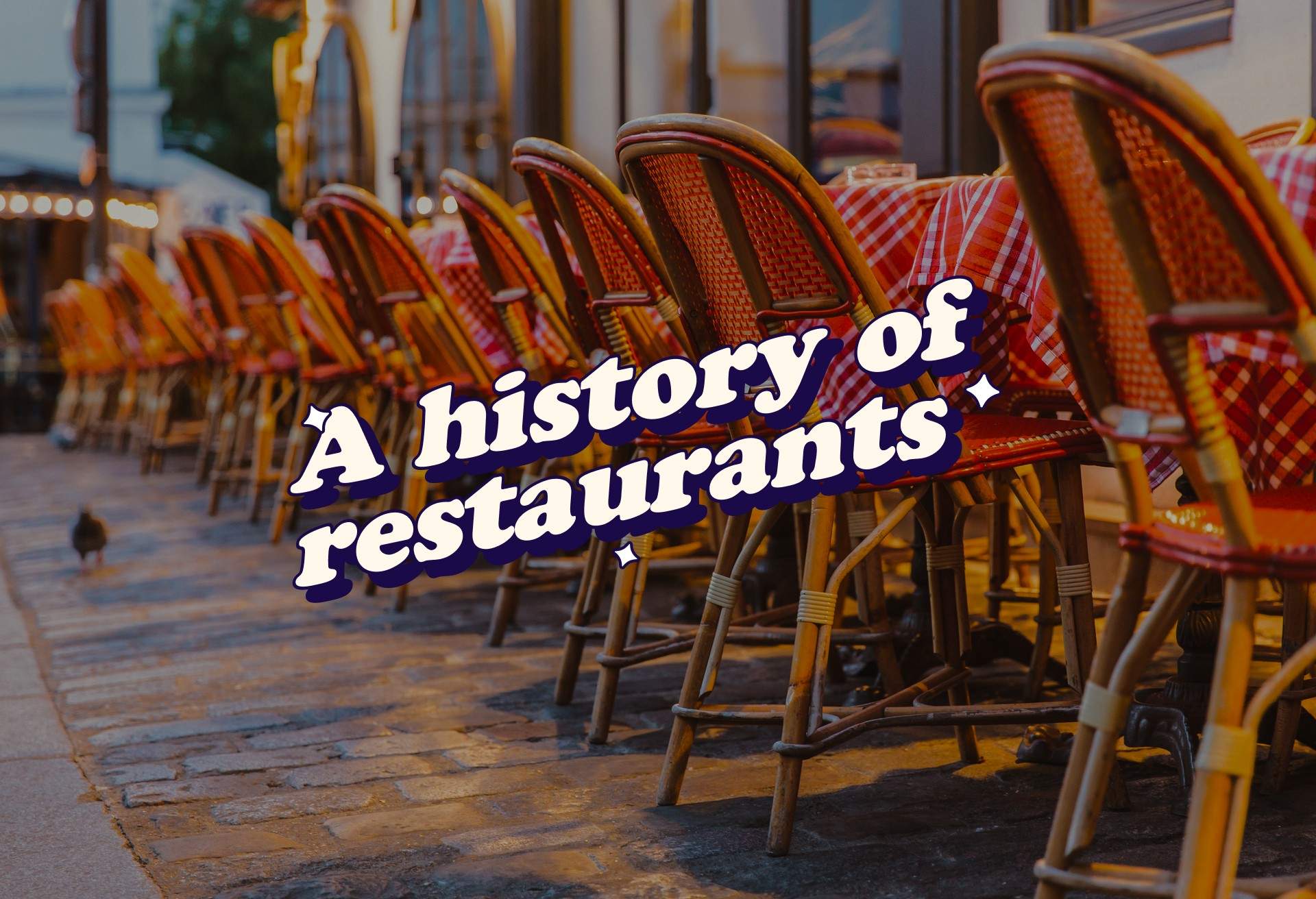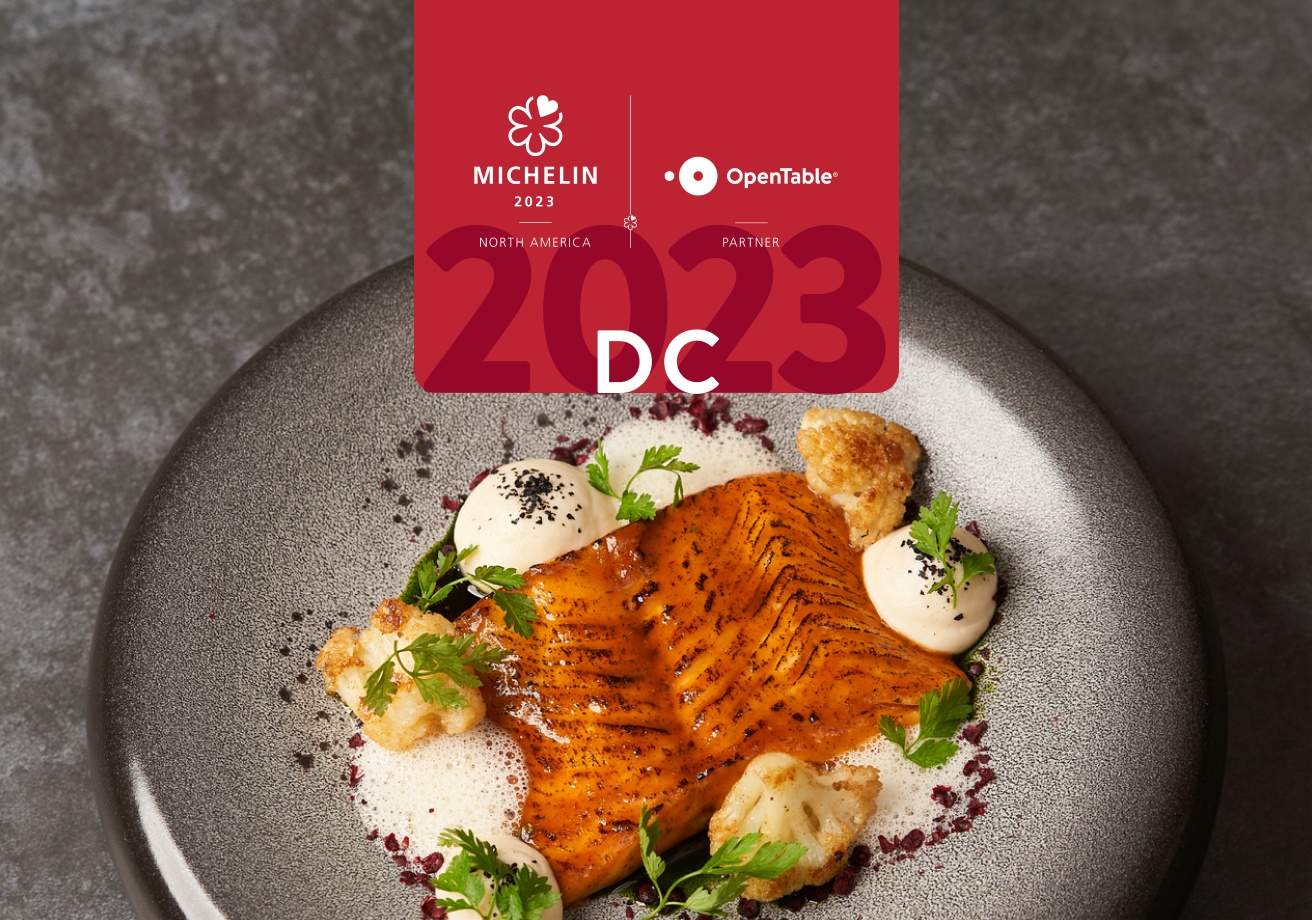The first place to call itself a restaurant was in Paris in the 1700s. It was far from the first place to serve prepared food in exchange for money, and even further from the last. Restaurants have since expanded to include fine dining and drive through, pizzerias and sushi bars, global chains and pop-ups. And they continue to evolve in ways that are often exciting, occasionally lamented, and sometimes controversial. Read on for a timeline of some key moments in the history of restaurants.

As early as 500 BC, public places to buy cooked food exist. Themopollum serves quick meals, primarily to Ancient Greeks without kitchen facilities. The Roman Empire also had popinas, highly social spots serving snacks and wine.

During the Song Dynasty, noodles shops, dumpling shops, and full-service, sit-down places we would likely recognize as restaurants cater to traveling merchants in big cities in China but attract locals, too.

Taverns, inns, and the like serve food throughout Europe—often a roast or stew is on offer at a communal table—to weary travelers.

Traditional tea houses in Japan start offering food, too. Credit is given to Sen no Rikyu for creating the now-traditional multi-course kaiseki menu with dishes cooked using multiple techniques, akin to what would become haute cuisine in Europe centuries later.

In Paris, traiteurs, who were given legal status to cook, serve, and sometimes deliver food in the late 1500s, start offering a table d’hôte where people can sit and eat; only one meal is served at a set time. Similar venues exist in England and throughout Europe.

The first café opens at the St-Germain fair. By 1723 there are over 400 throughout Paris serving drinks and pastries.

In Paris, Mathurin Roze de Chantoiseau opens the first restaurant called a restaurant. It specializes in restorative broths; unlike similar establishments, it is elegantly decorated and serves a range of dishes, so people order what they want. The Provost of Paris gives restaurants permission to do all these things 21 years later.

Oyster houses, coffee houses, and eating houses—venues that serve food without also offering lodging—open in the American colonies.

The French Revolution unleashes a torrent of trained cooks and servers on Paris. The number of restaurants skyrockets. Curiously, they pretty much stay in Paris. In other cities throughout France and Europe, public dining remains something for travelers, such venues remain attached to inns and hotels for decades.

The Lucianos move their street food stand (established in 1738) to a permanent indoor location in Naples, Italy, opening the world’s first pizzeria: Antica Pizzeria Port’Alba. The first pizzeria in the U.S. opens 70+ years later.

Delmonico’s, the first fine-dining spot in the U.S., opens in Manhattan, growing out of a pastry shop opened by brothers in 1827. The menu features wild game, French preparations (artichokes à la Barigoule), fresh produce from a farm owned by the restaurant, and its eponymous steak cut (a thick-cut bone-in ribeye). A fire destroys the restaurant, but it reopens in an even fancier building with multiple private dining rooms in 1837. Locations and owners will change, but Delmonico’s will operate in Manhattan until 2020.

The Canton Restaurant opens in San Francisco, becoming the first Chinese restaurant in the U.S.

Stollwerck-Automatenrestaurant, the first self-service restaurant, opens in Berlin. A similar Automat opens in New York in 1912, dispensing sandwiches, pies, and other homey options from a machine.

The Hotel Ritz Paris opens with chef Auguste Escoffier, who had already made his reputation at the Savoy in London. He codifies a brigade system, in which tasks are broken down by course and assigned to specific stations and chefs to maximize the team’s efficiency. It is used in fine-dining restaurants around the world to this day (and highly criticized in Hulu’s The Bear). He also codifies French haute cuisine itself in Le Guide Culinaire, in which he modernizes the grande cuisine codified by Marie-Antoine Carême earlier in the 19th century.

Édouard and André Michelin, brothers with a tire company, publish the first MICHELIN guide to encourage car travel—and thus tire-buying—in France. In 1926 they start awarding stars to indicate which restaurants are worth a special trip (versus worth visiting if you’re already in the area). While restaurant reviews existed for a while and other guidebooks ranked restaurants, the MICHELIN star system remains the most prestigious.

The first mention of tacos is published in Los Angeles; street vendors had been hawking them there and in San Antonio since the previous century.

The first sushi shop opens in the U.S. in Los Angeles. Sushi doesn’t become widely popular until after Nobuyoshi Kuraoka opens Nippon in Manhattan in 1963 and Noritoshi Kanai opens Kawafuku Restaurant in Los Angeles in 1966.

Prohibition kills many fine-dining restaurants as they struggle to make money without selling alcohol. Cafeterias and other more casual eateries open in their place.

Billy Ingram opens the first White Castle in Wichita, Kansas, selling 5¢ burgers. The all-white interior communicates cleanliness in the face of widespread understanding of germ theory and concerns about food hygiene spurred by Sinclair Lewis’s The Jungle (1906).

The food truck is born when the Oscar Mayer sausage company creates the Weinermobile, with a flip-up side window out of which to serve hot dogs.

Roy Kroc takes over the McDonald brothers’ fledgling franchise of hamburger joints; the fast-food joints eventually take over the world. Originally a barbecue drive-in in San Bernadino in 1940, the brothers switched to hamburgers in 1948 and an assembly line-inspired Speedie Service System, which mimicked the one White Castle had used for decades.

The U.S. Civil Rights Act of 1964 outlaws segregation based on race, color, religion, or national origin in all public accommodations, including restaurants. (Not all restaurants comply; some even file suit.)

The first Red Lobster opens in Lakeland, Florida. The Olive Garden opens in nearby Orlando in 1982. By the 1990s, such casual family dining chain restaurants dominate many American towns and suburbs.

Accounts differ, but the best story is that the term nouvelle cuisine—a move toward simpler, fresher, and more elegantly plated dishes in French cooking—is first used to describe the food prepared by top French chefs for the Concorde airliner.

Chez Panisse opens in Berkeley, California to become a beacon of farm-to-table cuisine (and endless mockery, too).

Wolfgang Puck opens Spago in Beverly Hills, California, which gets a lot of attention with a smoked salmon pizza, becomes a household name, and eventually dominates airport concessions.

Chef Norman Van Aken uses the term “fusion cooking” at a conference in Santa Fe, New Mexico giving diners and food writers something to talk about for decades.

Inspired by taquerias in San Francisco during his stint at Stars restaurant, chef Steve Ells opens Chipotle in Denver, Colorado. By the new century, the fast-casual style has taken off.

Ruth Reichl reviews Le Cirque in The New York Times as both its (recognized) restaurant critic and as an unknown diner, making the review as much about the different service she experienced as the food.

Fed up with calling restaurants one at a time in search of a table, Chuck Templeton founds OpenTable, a centralized, real-time reservations system for restaurants and diners.

The Thai government kicks its culinary diplomacy into high gear. In the mid-20th century, it had created dishes as part of a nation-building campaign and trained chefs for export for decades. The government now builds on that by developing model restaurants and offering business support for Thais who want to emigrate and spread pad thai (one of the aforementioned program-created dishes). The number of Thai restaurants around the world triples in 20 years.

Hell’s Kitchen premiers in the U.K., presenting abusive kitchen hierarchies as entertainment.

Everyone becomes a critic with the launch of Yelp.

Top Chef premiers in the U.S. A new kind of celebrity chef—one you’ve never heard of until they’re on a reality TV show—is born.

The iPhone is introduced. Amateur food photography explodes.

Diners, Drive-Ins, and Dives premiers on The Food Network; Guy Fieri becomes a hero to many as he brings a greater range of restaurants to national attention.

Roy Choi slings Korean tacos from the Koji food truck in Los Angeles, blurring edges between cuisines, types of dining, and what we eat where.

Instagram arrives and in a flash, no food shall go unphotographed.

Caviar is founded, offering food delivery from higher-end restaurants. Seamless had started the app-ordering trend in 1999, with Grubhub (2004) and Postmates (2011) following suit. Doordash (2013) and UberEats (2014) bring even more bling to the game.

The American Rescue Plan Act includes the Restaurant Revitalization Fund to help businesses survive the economic impact of the coronavirus pandemic.

The New York Times puts Philadelphia’s Korshak Bagels on its 2021 Restaurants List, sparking a nationwide debate: What counts as a restaurant?
Molly Watson is the principal overseeing content strategy at OpenTable.



